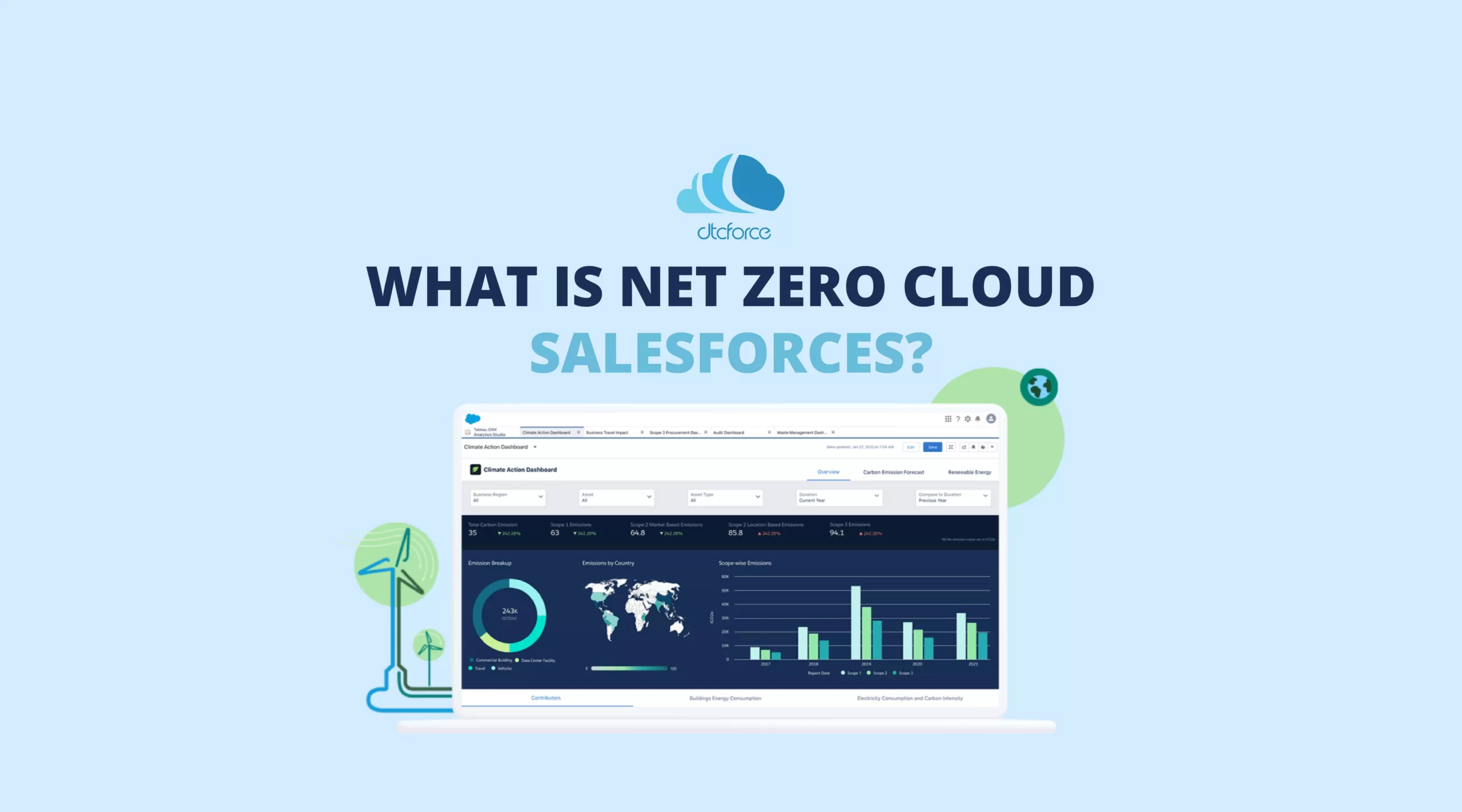Salesforce has announced its commitment to achieving net zero carbon emissions in its own operations and throughout its entire value chain by 2030. This is an ambitious goal, but one that is critical for addressing the global climate crisis and as the leading provider of cloud-based customer relationship management (CRM) software.
One way that Salesforce is working towards this goal is by transitioning its operations to a 100% renewable energy-powered cloud. This will not only reduce the company’s own carbon footprint, but also enable its customers to reduce their environmental impact.
In other words, Salesforce plans to reduce its carbon emissions to a level where they can be offset through carbon reduction projects and technologies. This means that the company will not only reduce its own emissions, but also invest in projects that help others reduce their emissions as well.
Salesforce’s net zero commitment is part of its larger sustainability strategy, which includes reducing energy consumption and waste, promoting sustainable sourcing, and supporting environmental conservation efforts. The company has also set a goal to become 100% renewably powered by 2022.
What is Net Zero Cloud Salesforce?
Salesforce’s net zero cloud is powered by a combination of wind and solar energy, which are some of the cleanest and most abundant sources of renewable energy available. This means that the company’s operations will no longer be dependent on fossil fuels, which are a major source of carbon emissions.
In addition to transitioning to a renewable energy-powered cloud, Salesforce is also implementing other sustainability initiatives, such as reducing waste and increasing recycling. These efforts will help the company achieve its net zero goal and set an example for other companies to follow.
What are the benefits of Net Zero Cloud?
One of the key benefits of Salesforce’s net zero cloud is that it allows businesses to access powerful technology without harming the environment. By using a cloud powered by renewable energy, companies can reduce their own carbon emissions and contribute to the fight against climate change.
By using the cloud, Salesforce can reduce its own energy consumption and carbon emissions, as well as help its customers do the same. In addition, the company is working with its data center providers to transition to renewable energy sources and increase energy efficiency.
Salesforce’s net zero commitment is a major step towards addressing the climate crisis and promoting sustainability in the tech industry. As one of the world’s largest cloud-based software companies, Salesforce has the power and influence to drive change and inspire others to follow its lead.
How is Net Zero Cloud useful for reducing carbon emissions?
One of the key ways that Salesforce is working towards achieving net zero emissions is through its use of the cloud. Cloud computing allows businesses to store and access data and applications over the internet, instead of using on-premises servers and storage systems. This not only reduces the amount of hardware and energy needed to support business operations, but also allows companies to easily scale and adapt to changing business needs.
By investing in renewable energy, reducing its carbon footprint, and supporting environmental conservation efforts, it’s achieving the sustainability trifecta. Salesforce is setting an example for other companies to follow and showing that sustainability and business success can go hand in hand.
What are the benefits of Net zero cloud computing?
The goal of this approach is to eliminate the carbon emissions resulting from the use of cloud services, thus creating a “net zero” impact on the environment. This can be achieved through a combination of initiatives, such as using renewable energy sources for power, reducing energy consumption and waste, and using more efficient data centers.
Net zero cloud computing is becoming increasingly popular as organizations look to reduce their environmental impact and become more sustainable. As businesses move more of their operations to the cloud, they are increasingly looking for ways to reduce their impact on the environment.
Reduce carbon footprint
By using renewable energy sources for power, reducing energy consumption and waste, and using more efficient data centers, organizations can reduce their carbon footprint and move towards net zero cloud computing.
Save cost by driving efficiency
By implementing these strategies, organizations can reduce their energy consumption and carbon emissions while also increasing their efficiency and cost savings. Traditional carbon accounting takes up to 6 months for organizations to gather data, log it in spreadsheets and track down missing data, then actually making calculations and verifying their accuracy. Organizations often employ third parties to do these labor and time intensive tasks for them.
However, with Net Zero Cloud, you get a stable and structured data model, bringing consistency and powerful analytics which saves cost. It also gives you better visibility of your data which helps you make well informed decisions, set targets and have a more positive impact on the environment.
Meet your sustainability goals
Additionally, net zero cloud computing can help organizations meet sustainability goals and comply with regulations related to carbon emissions. Auditors can also access Net Zero Cloud data to review, question, and eventually approve your data within Salesforce. Using a collaboration tool like Chatter, you can record any learnings and context within Salesforce and make it accessible to your sustainability managers.
7 Net Zero Cloud Salesforce Sustainability Use Cases You Need to Know
- Emissions Target Setting and Planning
By utilizing the target-setting and carbon-forecasting modules, set aggressive science-based targets and continuously monitor the net zero achievement plan. Use What-If Analysis simulation to make informed decisions on future emission sources l. - Real-Time, Accurate Carbon Emissions Data
Get rid of spreadsheets, track your progress continuously, and create reports in days instead of weeks. - Easy Reporting
Environmental data are presented in granular format, such as greenhouse gas emissions, energy consumption, and emission factors. - Executive Dashboards
Share real-time dashboards with the C-suite on company progress and where you are on the path to net zero. - Stakeholder Transparency
Provide investors, customers, and shareholders an accurate picture of your carbon footprint and the true environmental impact of doing business. - Supplier Engagement
Estimate your carbon footprint across the value chain using emission factor datasets from suppliers across the 15 upstream and downstream Scope 3 categories. - Scenario Planning for Emissions Reduction
Use the What-If Analysis tool to simulate how different decisions or investments will impact your carbon footprint and set emissions targets accordingly
Salesforce has been at the forefront of sustainable and forward thinking businesses for two reasons: its reliability and collaborative ecosystem. It’s possible to use Net Zero Cloud as a stand alone solution and to also build it within an existing Salesforce environment as another app, extending the functionality available to you.
Are you ready to go sustainable?








